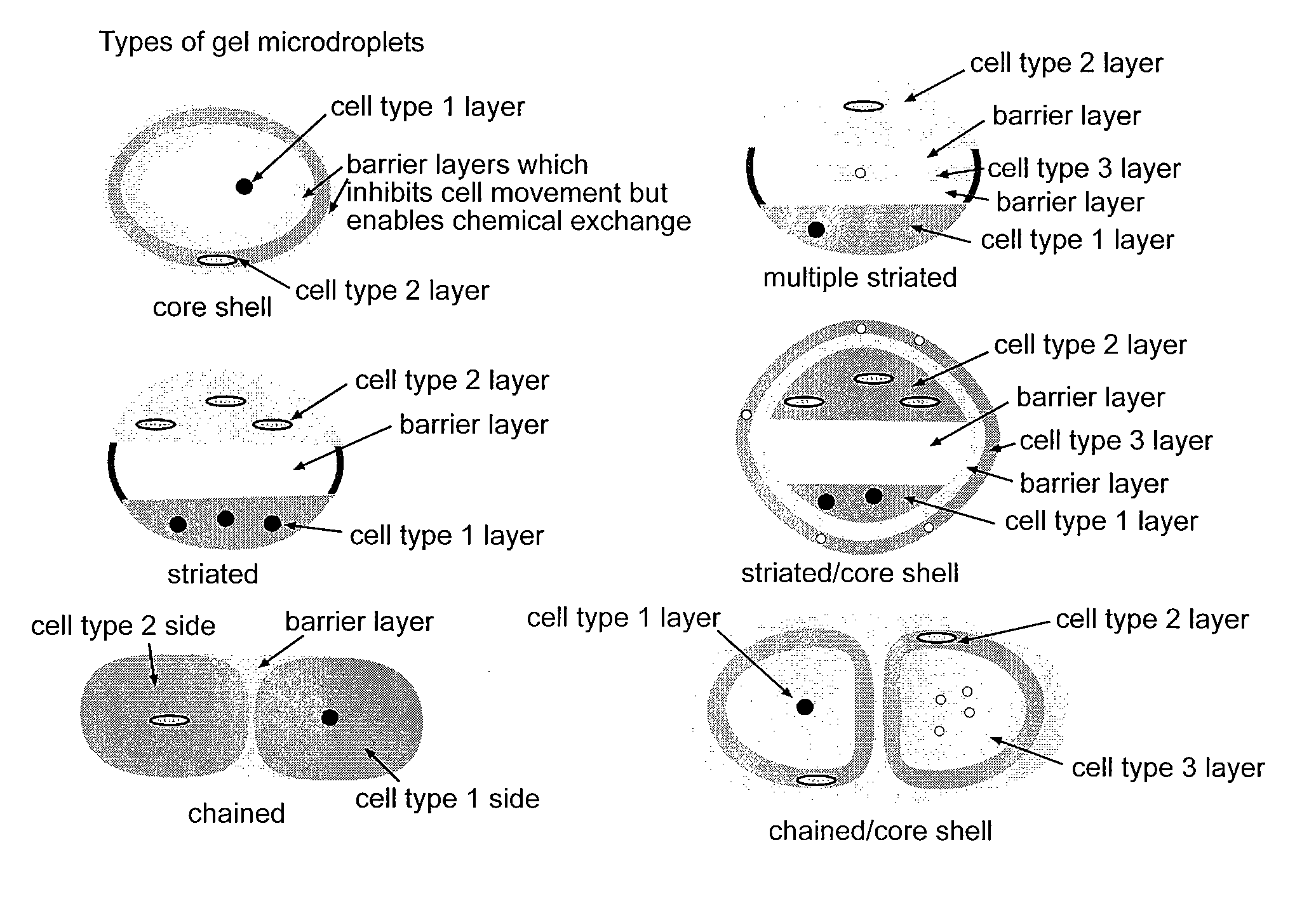Co-incubating confined microbial communities
a technology of confined microbial communities and confined environments, which is applied in the field of co-incubating confined microbial communities, can solve the problems of large majority of bacteria not being able to be cultured, many tasks are difficult or impossible for a single microorganism to perform, and require microorganisms that cannot be cultured
- Summary
- Abstract
- Description
- Claims
- Application Information
AI Technical Summary
Problems solved by technology
Method used
Image
Examples
examples
[0171]Methods. The microfluidic device was fabricated by using multilayer soft lithography in polydimethylsiloxane (PDMS) (Anderson et al., 2000, Analytical Chemistry 72: 3158-3164). The culture wells and the communication channel were separated by a 0.2 μm polycarbonate membrane and bonded together by using PDMS pre-polymer (Chueh et al., 2007, Analytical Chemistry 79: 3504-3508).
[0172]To make 2-sided GMDs cell cultures of Escherichia coli DsRed and Bacillus cereus GFP were grown in Luria-Bertani (Miller formulation, BD) at 37° C., 160 rpm overnight. Liquid agarose was made by adding 4 wt % Type IX Agarose (Sigma) to Luria-Bertani broth and melted in a 65° C. oven for one hour. One-mL aliquots of liquid agarose were cooled to 37° C. and inoculated with 100 μL of cell culture. The warm agarose with cells was then loaded into Teflon tubing connected to a Hamilton Gastight syringe backfilled with fluorinated oil FC40. The Teflon tubing containing the warm agarose was placed over a hot...
PUM
| Property | Measurement | Unit |
|---|---|---|
| distance | aaaaa | aaaaa |
| distance | aaaaa | aaaaa |
| thickness | aaaaa | aaaaa |
Abstract
Description
Claims
Application Information
 Login to View More
Login to View More - R&D
- Intellectual Property
- Life Sciences
- Materials
- Tech Scout
- Unparalleled Data Quality
- Higher Quality Content
- 60% Fewer Hallucinations
Browse by: Latest US Patents, China's latest patents, Technical Efficacy Thesaurus, Application Domain, Technology Topic, Popular Technical Reports.
© 2025 PatSnap. All rights reserved.Legal|Privacy policy|Modern Slavery Act Transparency Statement|Sitemap|About US| Contact US: help@patsnap.com



